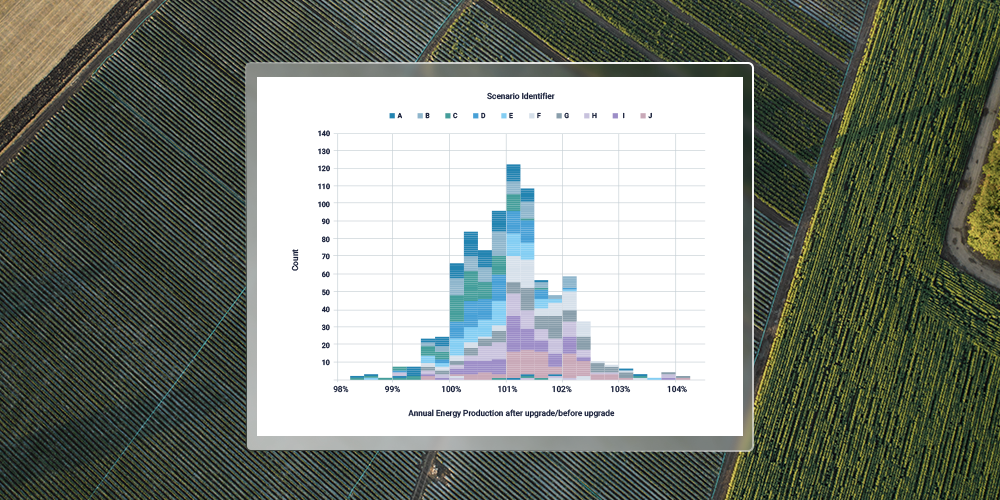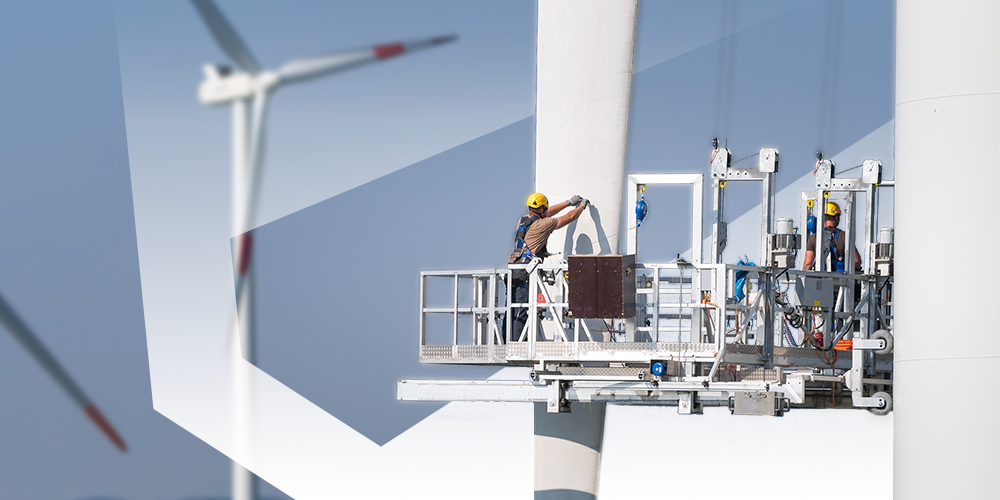For years, terms like artificial intelligence (AI), big data and machine learning (ML) were buzzwords. Businesses believed they were the solution to data problems without knowledge on how they worked or their benefits. Instead of learning to leverage them effectively, broad solutions were being built or implemented in hopes that they would deliver value.
This technology has evolved, and the knowledge and usages for these applications are becoming more sophisticated. Now, artificial intelligence and machine learning are being used across a range of industries to great success. The wind energy industry manages massive amounts of data. AI solutions are effective for analyzing data, generating trends and correcting performance issues — but it comes with challenges.
Clir combines benchmarking data, ML and years of industry expertise to help renewable energy stakeholders maximize their financial returns. As such, we’ve discovered challenges for effectively leveraging AI. When properly applied, though, it can yield impressive results.
Top challenges for AI in wind energy
1. Understanding how to leverage new technologies
Although AI, ML and big data are more sophisticated, there still exists a knowledge gap on how to effectively leverage them for wind power. There is a belief that simply implementing them will be enough to solve data challenges. Unfortunately, without a strategy, businesses can waste significant money implementing poor solutions.
To effectively leverage these technologies, businesses need to understand that AI is a tool, not the solution to a problem.
Like all technologies, there are limitations to what AI can solve. Businesses need to thoroughly understand the problem they want to solve before implementing a solution. For the wind industry, AI provides a number of possible uses — predicting failures and faults or calculating power curve changes. But without a defined strategy, it can be impossible to derive insights.
2. Collaboration in the wind energy industry
Between operators and owners, there are many parties involved in managing wind assets. But in the wind energy industry overall, there are very few OEMs — each with hundreds of gigawatts of installed energy. This means that they have access to massive amounts of data that could be used to train artificial intelligence and machine learning algorithms.
Unfortunately, OEMs regard turbine data as proprietary information, which means that they are unwilling to share data. This means that there is a lack of benchmarking data or insights into industry-wide issues.
It can also be difficult for owners to access OEM data from their own portfolio to manage asset performance. This obscures their ability to gain insights into energy production, reduces reporting capabilities and lessens opportunities for optimization.
3. Well-labelled data
With massive quantities of operations and contextual data available, it’s imperative that data is clean, standardized and well-labelled. Unfortunately, this frequently is not the case when dealing with wind portfolio data.
Data streams and labelling vary significantly across OEMs. Status codes lack industry standardization, and codes and tracked events vary between OEMs. Without consistently labelled data, significant time needs to be invested into turning disparate data into a clearly defined standard.
Without standardized and clean data, it can be impossible to derive insights or information for informed decisions. This renders the data effectively useless for its intended purpose.
Leveraging AI and machine learning for wind energy helps to ingest, standardize and accurately label events data for a consistent view of all wind farm data. This enables transparency for owners into the operations and performance of the portfolio, without the effort of manually managing data.
Applications for AI and ML
1. Monitor assets
Wind turbines and portfolios produce millions of data points, including performance data, weather and climate data, and data from external sources. In order to effectively understand and monitor turbine performance, AI and ML is essential to process and leverage all this data.
At Clir, we transform disparate OEM and turbine data sources into a standardized format for analysis. In order to process that amount of data quickly, we leverage ML algorithms that accurately label event data and label data streams to provide deeper insights and improved data quality. This enables accessible analytics and visualizations for reporting and monitoring performance. Having a standardized format also enables benchmarking against similar turbine types, OEMs and locations to see if performance is meeting industry standards. Without the use of AI and ML, data processing and standardization can take months, but with our algorithms, clients can begin accessing their enhanced data within weeks.
2. Improve transactions and acquisitions
As investment into renewable energy projects increases, the sales and acquisition pipeline is becoming more competitive. To give stakeholders a competitive advantage — as well as improve and accelerate the speed of transactions — we need AI.
With quicker timelines to act on opportunities, AI can be leveraged to ingest operational data to improve the accuracy of bids. Clir M&A ingests and standardizes operational data from assets for more accurate energy yields. This enables transparency into losses and allows an accurate prediction of expected long-term production. AI can also be used to benchmark operational performance against the industry. All of this can help to ensure clients are making good investment decisions and are able to maximize production post-acquisition.
3. Manage risk
With a lack of industry collaboration, it can be hard to understand the risks associated with the site design, location or OEM. Unfortunately, this is needed to progress the industry and drive down insurance costs.
With access to well-labelled, industry-wide benchmarking data, owners can understand potential areas of risk for current and future projects. This includes technological risks, but also environmental risks such as extreme weather events. Clir Risk’s AI efficiently processes a billion dollars in claims data to provide owners with earlier and deeper insights into the risks that could be impacting their projects. This data — along with mitigation strategies to reduce these risks — can be used to improve insurance terms, reduce the cost of financing and increase investment into projects.
The future of AI-based solutions
The industry is slowly learning the value of data to improve results from artificial intelligence technology solutions. This includes collaborative efforts between OEMs to provide benchmarking data on industry-wide, project-related or site-specific issues.
Clir’s AI and ML models are backed by clean, well-labelled data, the largest wind and solar data set and decades of industry expertise. This allows for industry-leading results and unparalleled insight into production, health, risk and financing.





.png)


